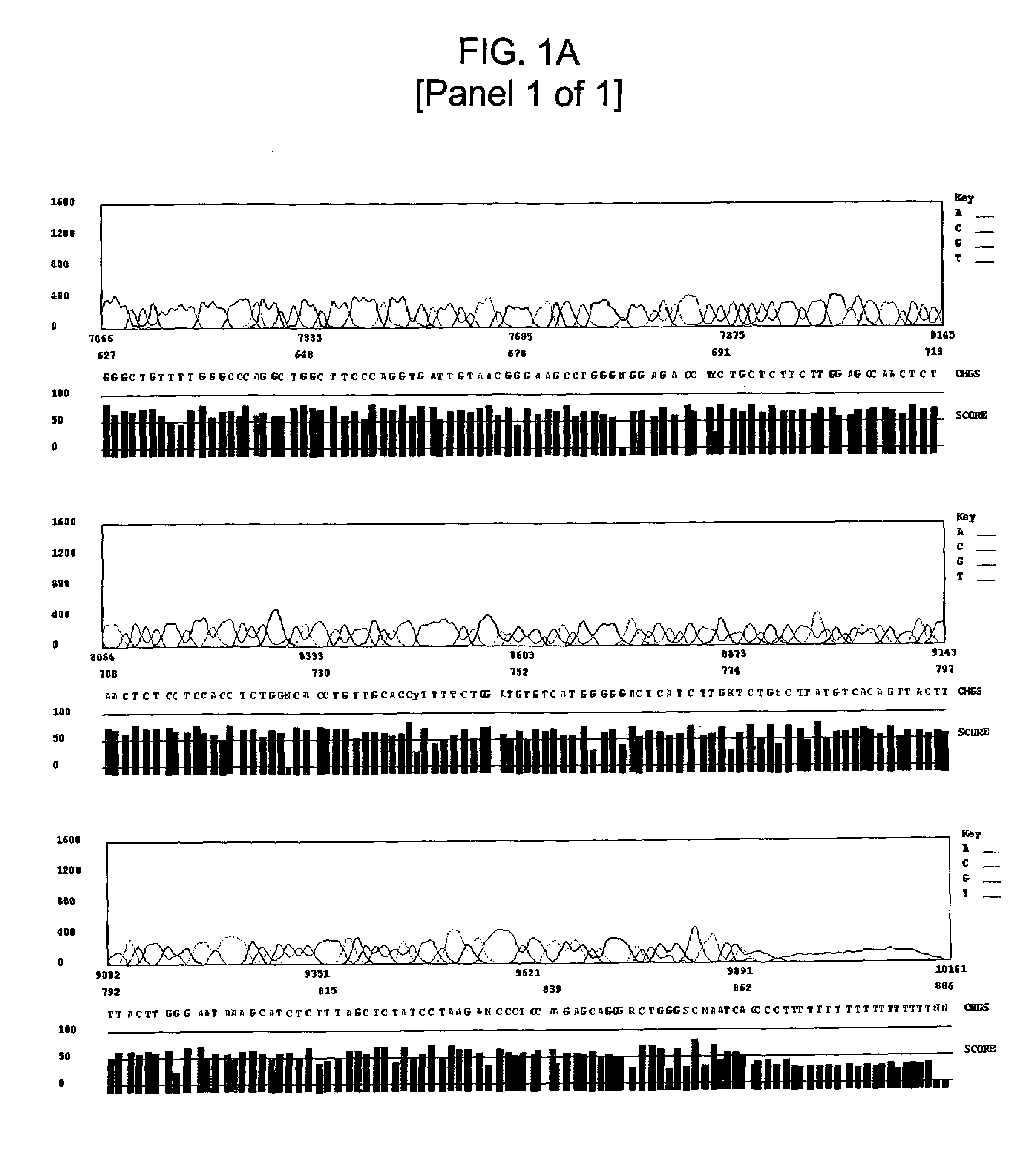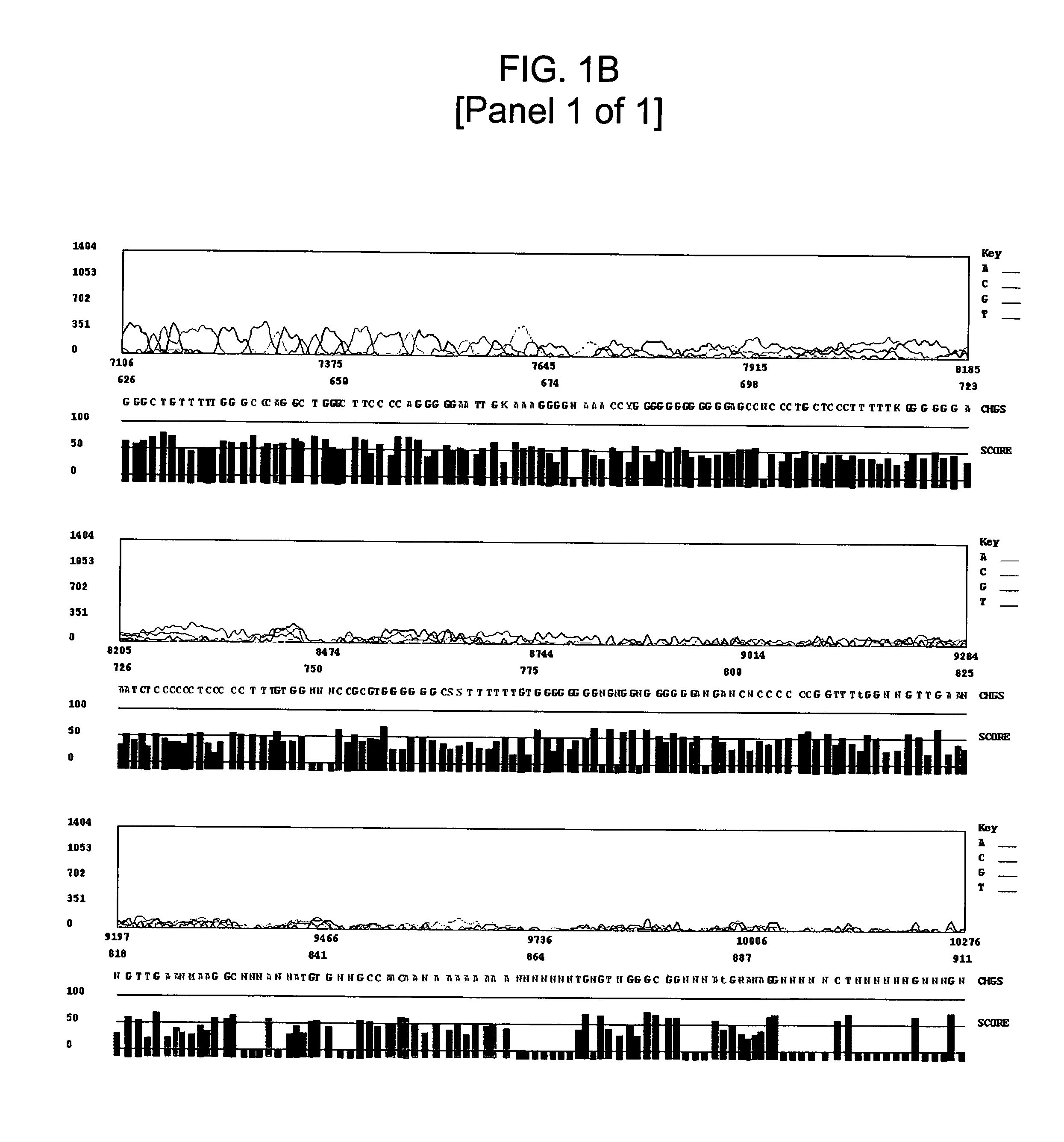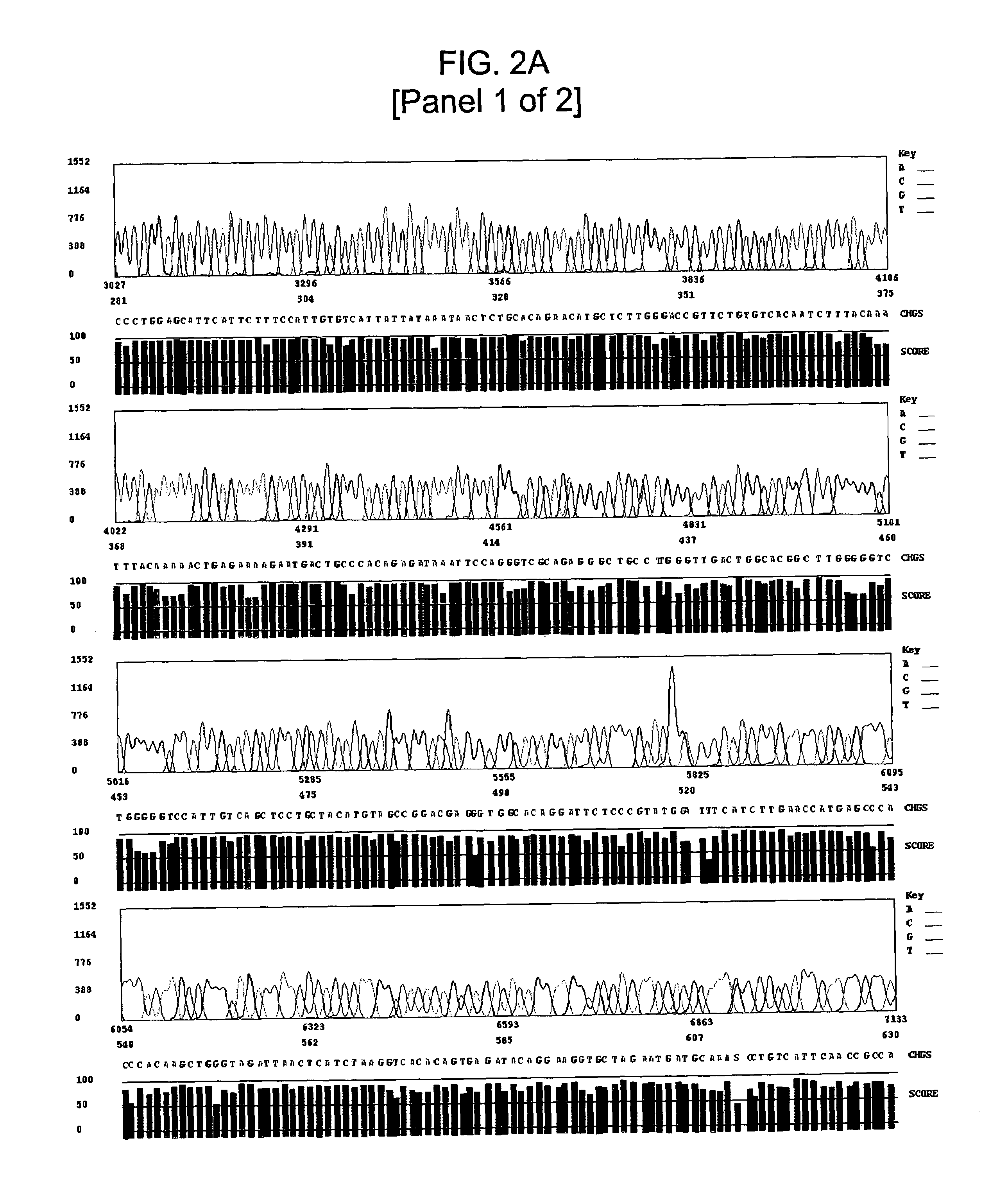Methods for sequencing GC-rich and CCT repeat DNA templates
a dna sequence and template technology, applied in the field of methods for sequencing gc-rich and cct repeat dna templates, can solve the problems of inability to detect the extension fragment created, the difficulty of obtaining reliable sequence information in extraordinarily difficult and challenging regions, and the persistence of difficulties associated with sequencing certain types of dna sequences. achieve high cytosine and/or guanosine content, high cg content, and high gc conten
- Summary
- Abstract
- Description
- Claims
- Application Information
AI Technical Summary
Benefits of technology
Problems solved by technology
Method used
Image
Examples
example 1
Primer Design and Preparation
[0104]Primers having higher Tds were designed to hybridize to the PUC18 plasmid vector in which target DNAs were inserted. Two primer sites on the PUC18 vector that would hybridize primers with an average Td=73.8° C. were located. These primers are up and downstream of the standard M13 forward and reverse primers (respectively) used in sequencing reactions.
[0105]The sequences of the primers in this primer set are as follows:
PCU18 Forward Primer:
[0106]GC-PUC18 FP=24mer (PUC18 position 327–350) Td=74.2
[0107]
(SEQ ID NO: 1)5′ GCT GCA AGG CGA TTA AGT TGG GTA 3′
PUC18 Reverse Primer:
[0108]GC-PUC18 RP=26mer (starts at position 491–516) Td=73.4
[0109]
(SEQ ID NO: 2)5′ GTT GTG TGG AAT TGT GAG CGG ATA AC 3′
[0110]Both primers were synthesized using a custom MerMade instrument (BioAutomation, Plano, Tex.) and used in the comparative sequencing experiments described in examples 2 and 3, below
example 2
High GC Content Template Sequencing
Materials and Methods
[0111]Automated dye-terminator sequencing reactions on several GC-rich template DNAs were conducted using both modified standard sequencing conditions and the GC-rich sequencing method of the invention. An Applied Biosystems model 3700 sequencer was utilized for all sequencing runs.
The reaction mixture was as follows:
[0112]1.0 μl dGTP BDTv3 terminator mixture, containing polymerase, dNTPs and ddNTPs in a buffer (ABI, Foster City, Calif.)[0113]0.0 μl water[0114]0.31 μl primer from 6.4 μM stock, yielding a final concentration of 0.48 μl 1.0 μl halfTERM buffer[0115]3.0 μl template DNA from 35 ng / ml stock
Cycling conditions were as follows:[0116]Step 1=3 min @ 92° C.[0117]×1 cycle[0118]Step 2=30 sec @ 92° C.[0119]30 sec @ 67° C.[0120]4 min @ 75° C.[0121]×60 cycles[0122]Step 3=soak @ 4° C.
[0123]Template DNA was prepared using standard techniques and diluted to a final concentration of approximately 33 ng / μl. The primers described in ...
example 3
CCT Repeat Template Sequencing
Materials and Methods
[0128]Automated dye-terminator sequencing of a template DNA containing CCT repeat elements was conducted using both modified standard sequencing conditions and the CCT repeat sequencing method of the invention. An Applied Biosystems model 3700 sequencer was utilized for all sequencing runs.
The reaction mixture was as follows:
[0129]1.0 μl dGTP BDTv3 terminator mixture, containing polymerase, dNTPs and ddNTPs in a buffer (ABI, Foster City, Calif.)[0130]0.0 μl water[0131]0.31 μl primer from 6.4 μM stock, yielding a final concentration of 0.48 μl 1.0 μl halfTERM buffer[0132]3.0 μl template DNA from 35 ng / ml stock
Cycling conditions were as follows:[0133]Step 1=1 min @ 92° C.[0134]×1 cycle[0135]Step 2=15 sec @ 92° C.[0136]10 sec @ 54° C.[0137]4 min @ 65° C.[0138]×60 cycles[0139]Step 3=soak @ 4° C.
[0140]Template DNA was prepared using standard techniques and diluted to a final concentration of approximately 33 ng / μl. The primers described ...
PUM
| Property | Measurement | Unit |
|---|---|---|
| Temperature | aaaaa | aaaaa |
| Temperature | aaaaa | aaaaa |
| Temperature | aaaaa | aaaaa |
Abstract
Description
Claims
Application Information
 Login to View More
Login to View More - R&D
- Intellectual Property
- Life Sciences
- Materials
- Tech Scout
- Unparalleled Data Quality
- Higher Quality Content
- 60% Fewer Hallucinations
Browse by: Latest US Patents, China's latest patents, Technical Efficacy Thesaurus, Application Domain, Technology Topic, Popular Technical Reports.
© 2025 PatSnap. All rights reserved.Legal|Privacy policy|Modern Slavery Act Transparency Statement|Sitemap|About US| Contact US: help@patsnap.com



